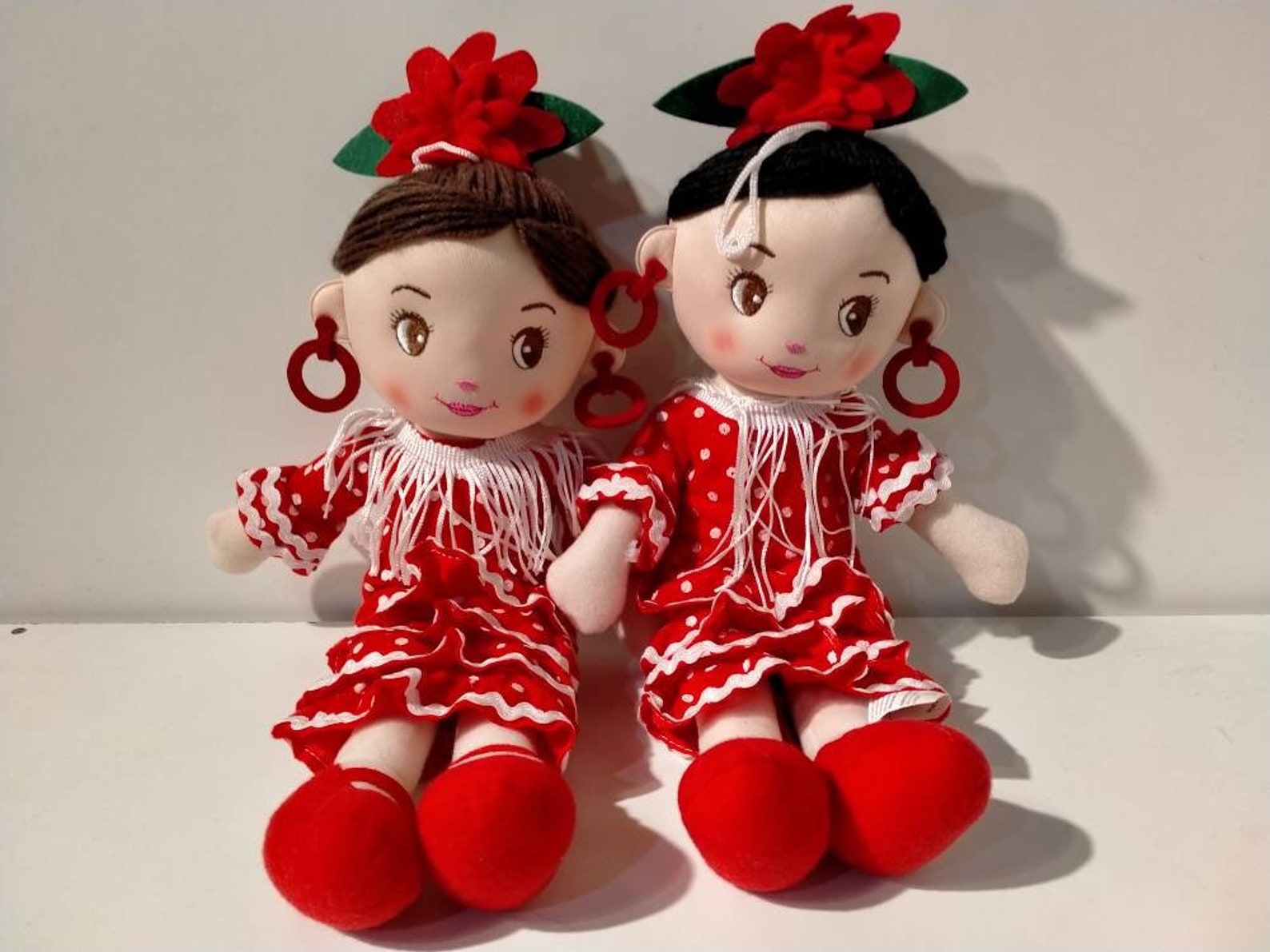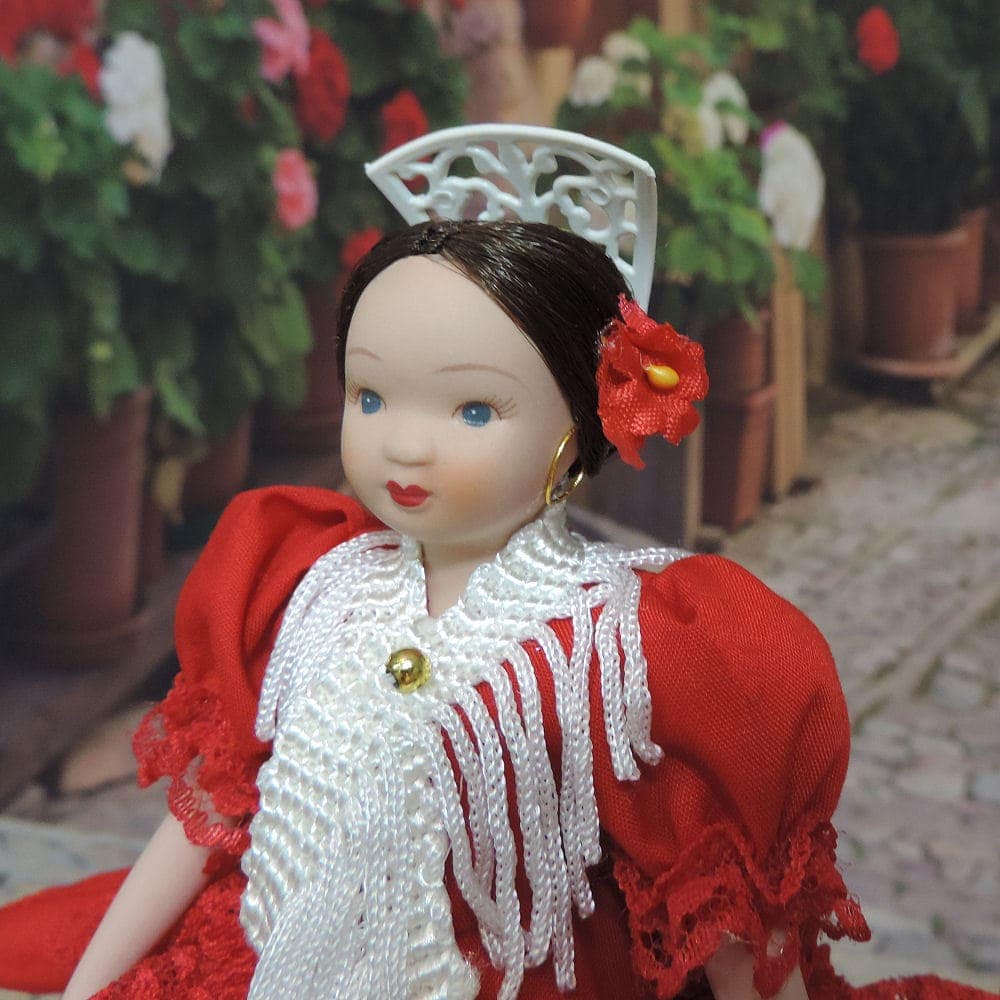Doll in spanish language – Dolls in the Spanish language are not just playthings; they are cultural artifacts that embody history, tradition, and artistry. From traditional handcrafted dolls to contemporary masterpieces, dolls in Spanish-speaking countries hold a special significance, reflecting the diverse cultural heritage of the region.
This exploration delves into the etymology of the term “doll” in Spanish, examining its linguistic roots and cultural influences. It also unveils the various types of dolls prevalent in Spanish culture, showcasing their unique characteristics and craftsmanship. Furthermore, the cultural significance of dolls is explored, highlighting their role in storytelling, traditions, and social interactions.
Etymology of “Doll” in Spanish

The Spanish word for “doll,” “muñeca,” has a rich and multifaceted etymology, drawing influences from various linguistic and cultural factors. Let’s delve into its historical evolution and the forces that shaped its current form.
Arabic Origins
The term “muñeca” traces its roots back to the Arabic word “mu’nikah,” meaning “small woman” or “little lady.” This term was brought to the Iberian Peninsula by Muslim conquerors during the 8th century and gradually entered the Spanish language. Over time, the pronunciation evolved from “mu’nikah” to “muñeca,” reflecting the linguistic changes that occurred in Spanish.
Diminutive Suffix
The suffix “-illa” in “muñeca” is a diminutive suffix, commonly used in Spanish to indicate smallness or affection. This suffix is attached to the noun “mu” (derived from “mu’nikah”) to create the word “muñeca,” which literally translates to “little woman” or “little lady.”
Cultural Significance
The concept of dolls has long been embedded in Spanish culture, with dolls serving as playthings for children, objects of religious devotion, and artistic representations. The word “muñeca” reflects the cultural significance of dolls in Spanish-speaking societies, capturing the idea of a small, beloved figure that can provide comfort, companionship, or inspiration.
Types of Dolls in Spanish Culture
Spanish-speaking countries boast a rich and diverse array of dolls, each with its own unique history and significance. From traditional handcrafted figures to modern playthings, dolls have long played a cherished role in Spanish culture.
Traditional Dolls
- Mariquita Pérez: This iconic doll, created in the 1940s, is known for her elaborate clothing, porcelain face, and endearing expression. Mariquita Pérez represents the epitome of traditional Spanish dolls and remains a beloved collectible today.
- Muñecas de Trapo: These charming rag dolls are handcrafted from colorful fabrics and often adorned with intricate embroidery. Muñecas de Trapo have been a beloved part of Spanish households for centuries and continue to be cherished as a symbol of childhood.
- Muñecas de Madera: Carved from wood, these dolls are often painted with vibrant colors and adorned with intricate details. Muñecas de Madera are a testament to the skilled craftsmanship of Spanish artisans and are often passed down through generations.
Handcrafted Dolls
In addition to traditional dolls, Spanish-speaking countries are also renowned for their exquisite handcrafted dolls. These dolls are often made from unique materials such as porcelain, ceramic, or papier-mâché and feature intricate designs and lifelike details.
- Porcelain Dolls: Spanish porcelain dolls are known for their delicate features, intricate costumes, and expressive eyes. They are often highly collectible and prized for their artistry.
- Ceramic Dolls: Ceramic dolls are made from fired clay and often feature whimsical or humorous designs. They are popular as decorative pieces and collectibles.
- Papier-Mâché Dolls: Papier-mâché dolls are made from a mixture of paper and glue and can be molded into a variety of shapes and sizes. They are often used to create dolls with unique and imaginative designs.
Modern Dolls
Spanish-speaking countries have also embraced modern dolls, which are often inspired by popular culture and feature contemporary designs. These dolls are typically made from plastic or vinyl and are often highly detailed and articulated.
- Fashion Dolls: Fashion dolls are designed to reflect the latest trends in fashion and often feature glamorous outfits and accessories. They are popular among children and collectors alike.
- Action Figures: Action figures are designed to represent characters from popular movies, TV shows, and video games. They are often highly articulated and come with a variety of accessories.
- Collectible Dolls: Collectible dolls are often based on popular characters or historical figures and are designed to be highly detailed and accurate. They are popular among collectors and enthusiasts.
Cultural Significance of Dolls
Dolls hold a profound cultural significance within Spanish-speaking communities, serving as more than mere playthings. They are deeply embedded in traditions, storytelling, and social interactions, embodying cultural values and fostering a sense of identity.
In many Spanish-speaking cultures, dolls are not just for children but are cherished by people of all ages. They are often passed down through generations, becoming family heirlooms that carry emotional and historical value.
Storytelling and Traditions
Dolls play a vital role in storytelling and the preservation of cultural traditions. They are used in folktales, legends, and religious ceremonies to represent characters, convey moral lessons, and connect people to their cultural heritage.
- In Mexico, the “Día de los Muertos” (Day of the Dead) is celebrated with dolls called “calaveras” (skulls) and “catrinas” (skeletons), which symbolize the departed and serve as a reminder of the transience of life.
- In Spain, dolls are used in traditional festivals such as the “Fallas” in Valencia, where giant papier-mâché dolls are paraded through the streets before being burned in a symbolic act of purification.
Social Interactions, Doll in spanish language
Dolls also facilitate social interactions and help children develop their social skills. They are used in imaginative play, fostering creativity, communication, and problem-solving abilities.
- In many Spanish-speaking households, dolls are used to teach children about family roles, gender stereotypes, and social norms.
- Dolls can also be used as a tool for therapy and emotional expression, helping children cope with difficult experiences or express their feelings.
Regional Variations in Doll-Making: Doll In Spanish Language
In the vast tapestry of Spanish-speaking cultures, doll-making traditions showcase a kaleidoscope of regional variations. Each region boasts unique techniques, styles, and materials that lend dolls their distinctive character.
From the vibrant colors of Mexican clay dolls to the intricate embroidery of Guatemalan worry dolls, these variations reflect the diverse cultural heritage and artistic expressions of different Spanish-speaking communities.
Mexico
- Clay dolls: Traditionally crafted from red or black clay, these dolls are adorned with intricate patterns and painted with vibrant colors. They often depict traditional Mexican attire and cultural symbols.
- Papier-mâché dolls: Originating in the central region, these dolls are made from a mixture of paper and glue. They are known for their delicate features and detailed costumes.
Guatemala
- Worry dolls: Small, wooden dolls that are traditionally placed under pillows at night to absorb worries and promote peaceful sleep.
- Cloth dolls: Handmade from colorful fabrics, these dolls often feature traditional Mayan designs and intricate embroidery.
Spain
- Cloth dolls: Traditional Spanish dolls are often made from fabric and feature simple, yet elegant designs. They are often dressed in traditional Spanish costumes.
- Ceramic dolls: Crafted from clay, these dolls are known for their realistic features and intricate details. They are often used for decorative purposes or as collector’s items.
Contemporary Doll Artists

In recent years, contemporary doll artists in Spanish-speaking countries have emerged, pushing the boundaries of doll-making with their innovative designs, techniques, and artistic vision. These artists are creating unique and thought-provoking works of art that challenge traditional notions of what a doll can be.
Their dolls often explore themes of identity, culture, and social issues, and they use a variety of materials and techniques to create their unique works of art. These artists are gaining international recognition for their innovative work, and they are helping to redefine the art of doll-making.
Notable Contemporary Doll Artists
- Rebeca Luciani(Argentina): Luciani is known for her hyperrealistic dolls that often explore themes of identity and social issues. Her dolls are often made from silicone and other materials, and they are incredibly detailed and lifelike.
- Elena Castañeda(Mexico): Castañeda is a self-taught doll artist who creates unique and whimsical dolls from a variety of materials, including paper, fabric, and found objects. Her dolls are often inspired by Mexican folk art and culture.
- Leonor Antunes(Portugal): Antunes is a Portuguese artist who creates surreal and thought-provoking dolls from a variety of materials, including porcelain, resin, and fabric. Her dolls often explore themes of identity, gender, and the human condition.
Conclusive Thoughts

The journey through the world of dolls in the Spanish language concludes with a glimpse into regional variations in doll-making techniques and styles. The unique characteristics and materials used in different regions are showcased, demonstrating the diversity of this art form.
Finally, the spotlight is turned on contemporary doll artists who are pushing the boundaries of doll-making, showcasing their innovative designs, techniques, and artistic vision.
FAQ Corner
What is the origin of the term “doll” in Spanish?
The term “doll” in Spanish, “muñeca,” originates from the Latin word “pupa,” meaning “girl” or “puppet.”
What are some traditional types of dolls in Spanish culture?
Traditional types of dolls in Spanish culture include muñecas de trapo (rag dolls), muñecas de cartón (cardboard dolls), and muñecas de madera (wooden dolls).
What is the cultural significance of dolls in Spanish-speaking communities?
Dolls in Spanish-speaking communities hold cultural significance as symbols of childhood, family, and tradition. They are often used in storytelling, religious rituals, and as decorative objects.